What if you’ve developed an amazing bedtime routine, the bedtime and wake time patterns are predictable, your baby has segments of deep sleep at night when suddenly, you realize it’s time to address the pacifier?
Sleep issues involving the pacifier/paci/soother/dummy/binky fall into three main categories:
- Your baby won’t take a pacifier (this is ok!). Your baby may prefer to use finger or thumb sucking (or something else entirely) to soothe rather than a pacifier habit.
- Your baby does not have full independent use of it – it “pops out” all night or many times a day during naps.
- You think it’s time for weaning your older baby or toddler away from their pacifier.
You know it’s time to address the pacifier when:
- Nap time is short and unpredictable, your baby wakes every time the paci falls out
Your baby needs you to put the soother back in order for the baby to sleep or fall back asleep - Sleep patterns are interrupted at night by the pacifier, making you wonder if using a pacifier is helping or hurting overall sleep
- Your child is approaching a certain age that your Pediatrician and/or Pediatric Dentist has advised is a good time to wean off. The “months of age” recommendation varies by practitioner. The American Academy of Pediatrics website states, “When your child reaches 12 months of age, you may want to talk with your pediatrician about how – and when – to start weaning your child from the pacifier.”
?Click the image below if you’d like to watch my video lesson “All About Pacifiers”. ?
Sleep consultants are pretty divided on the use of pacifiers. Most are prescriptive and say babies SHOULD or SHOULD NOT have them, especially long term. For me, I’ve seen success with through the night sleeping with either approach. It’s really up to the goals of the family and with my program either is ok.
If you are experiencing the “pacifier shuffle” back and forth to the crib for many reinsertions of the soother at night, you need to decide if you want to teach independent use or quit cold turkey. Both have their considerations and age is a big one. Read on to see which approach might work best for you.
Teaching Independent Pacifier Use – what to do if they are popping out all night
Babies will begin grasping objects as early as 2 months old, but usually this develops in the 3-6 month range. Therefore, if your child is just approaching the 3 month mark, it might be a while until they can developmentally grasp and return the pacifier to their own mouth independently.
My first tip for if your child’s soother pops out all night is to get a pacifier holder. Some common brands are WubbaNub and Nookums. These are great because they make the object bigger and easier to find. The pacifier holder can also be a lovey since they have a stuffed animal attached.
In my house, we used the penguin Nookums pictured below, although the one pictured is a BABY penguin. So much cuter. I like this brand a bit more because it is interchangeable with which pacifier is being used whereas the other brand can only have the attached pacifier. You may want to buy a couple of them in case one is lost or if you need to wash one.
My second tip is to practice motor skills during the day. Kids learn through play and interaction so during the day is a perfect time to learn this skill! Practice giving the child a pacifier in their hand and help them move it to their mouth. Changing the distance from the pacifier being close (tummy time or the car) and having them crawl to it. During the night, leaving a few pacifiers in the crib will help them locate one in case it pops out. Having one of the animal pacifier holders is especially helpful during this time because it gives them a bigger target.
How and when to do cold-turkey
Do not let your baby fall asleep with a pacifier then sneak in and take it once they have fallen asleep. Babies need similar environments when they fall asleep and wake up in order to connect sleep cycles.
Some things to consider before taking the pacifier, cold-turkey:
- Be intentional and planned
- Follow your parental intuition (would weaning be better? waiting it out? trying some independent use games as described above?)
- Consult your pediatrician and pediatric dentist on timing, don’t take it away because you feel bad or have been pressured to do so by family members, mom-groups, etc.
- Connect with other caretakers (spouse, partner, babysitter etc.) to be on the same page
- Go for it and be consistent. Expect that it will take time for your child to adjust and will need to find other ways to soothe to sleep without it (and will need your help).
How and when it is best to wean off or quit pacifier use:
Generally, weaning off a pacifier can begin at 10 months (although waiting makes it easier!). This is because children can comprehend what you are saying. However, it is ultimately up to you and your providers. In my family, after consulting with both our Pediatrician and Dentist, my daughter was two and a half when we decided to take away her pacifier.
Here’s a step-by-step plan to wean off use with a child that is 10 months or older:
- 24 hour warning to allow for processing – Giving your child a heads up before taking the pacifier will give them time to process what is about to happen. Also, giving a warning will make it less of a surprise and hopefully cause less fussing.
For example: “Hey Jojo we are going to get rid of your pacifier tomorrow. The pacifier fairy is going to come collect all of your wacis, put them in this bag and take them to all the new babies. Also, the pacifier fairy wants to know what you want in exchange for all your wacis.”
2. Use Play – Children learn best through playing. Playing pretend without the pacifier is giving them something to expect. It is helpful to let the child play as the adult so they can soothe a stuffed animal or doll and see that it will all be okay.
Continuing the example: “Let’s pretend the pacifier fairy is coming! Let’s put all your wacis in a bag and put them on the porch for her. Now let’s pretend it’s bedtime, I’ll tuck you in and turn out the lights”. Then I went out and came back in, “Yay Jojo! You slept through the night without your waci!”. Then we put her teddy bear to sleep and Jojo played as the mommy. We would pretend the teddy bear was fussing for the paci and we would soothe it and say “It’s okay teddy, you’re a big kid”.
3. Binky Fairy “Paci Fairy” Comes – Collect all of the pacifiers, put them out for the paci fairy to come and give the gift your child chose in exchange if you decided to do that. Jojo was SO excited all day about the lipgloss she got! During bedtime, your child, like mine, might cry out for their pacifier. It is important to be consistent, empathetic, and encouraging. Some extra soothing is helpful, extra hugs or songs.
Be consistent and don’t go backwards to offer a pacifier in the future.
Bye Bye Binky!
Sincerely,
Sarah Branion
PS – Whenever you’re ready, I’d love to help you with you child’s sleep. Start here with my FREE Baby Sleep Cheatsheet.
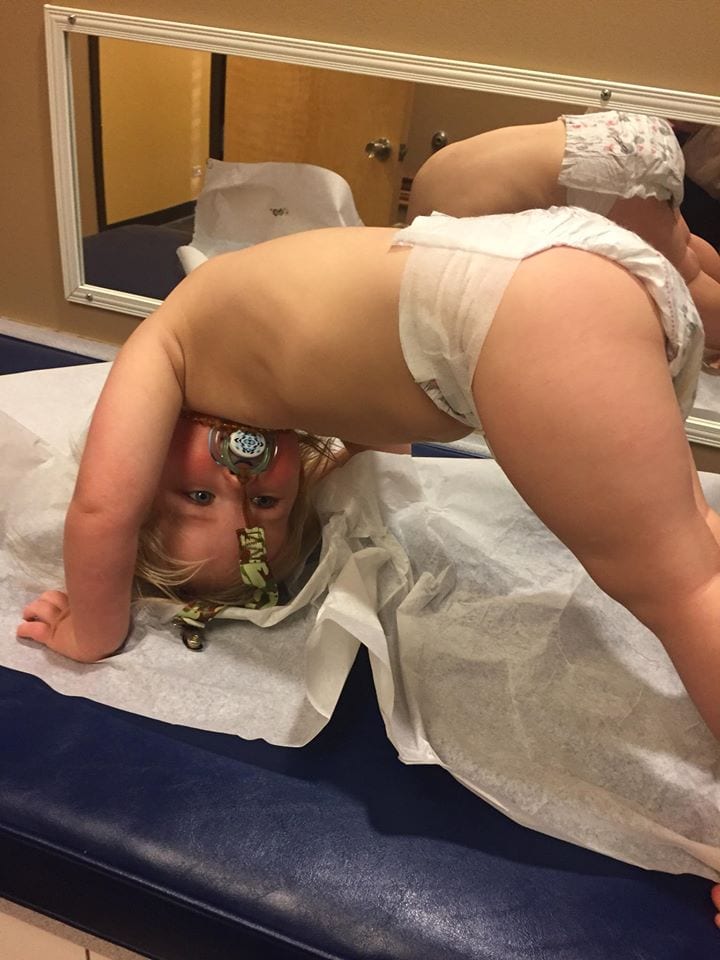
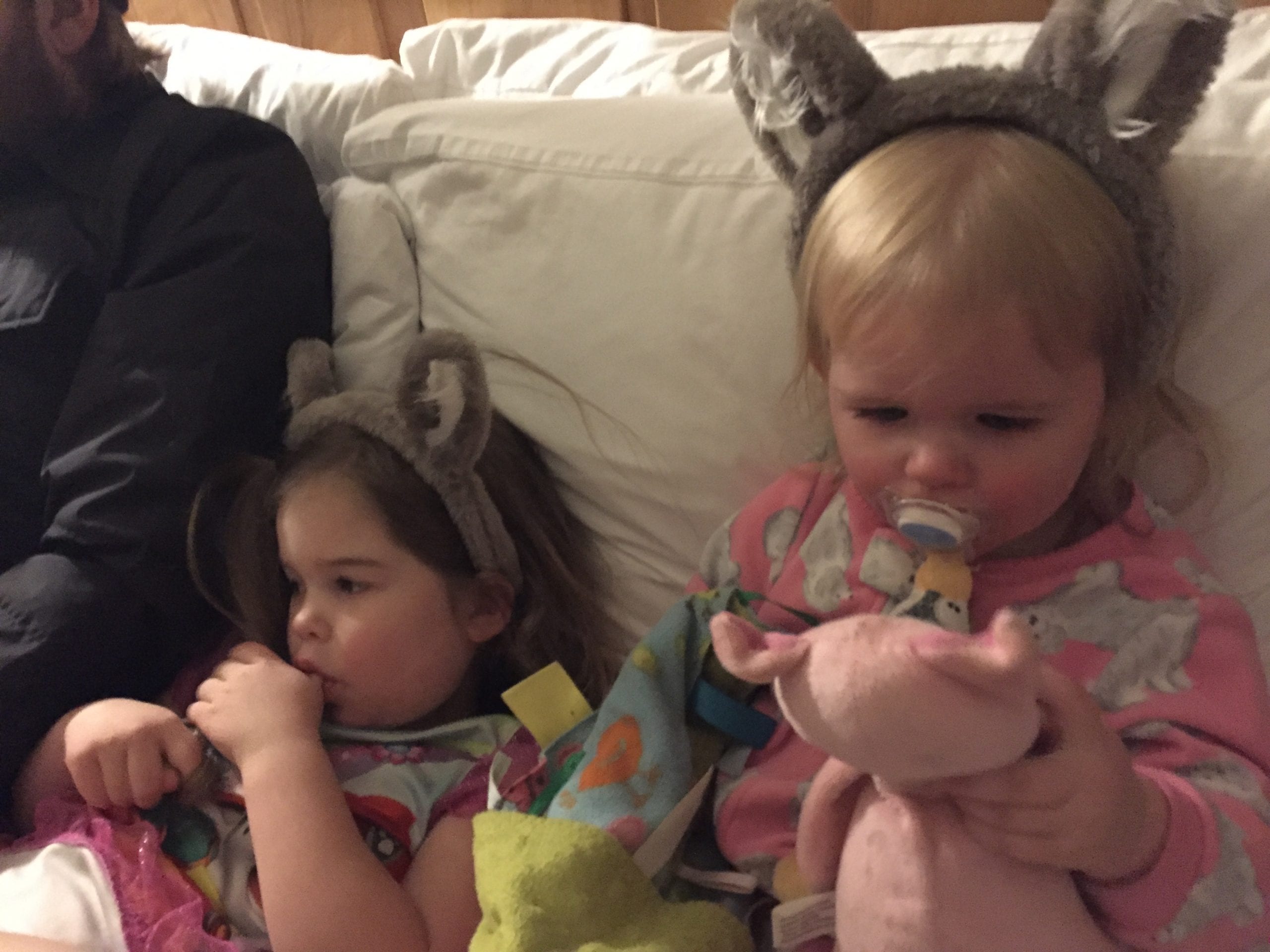
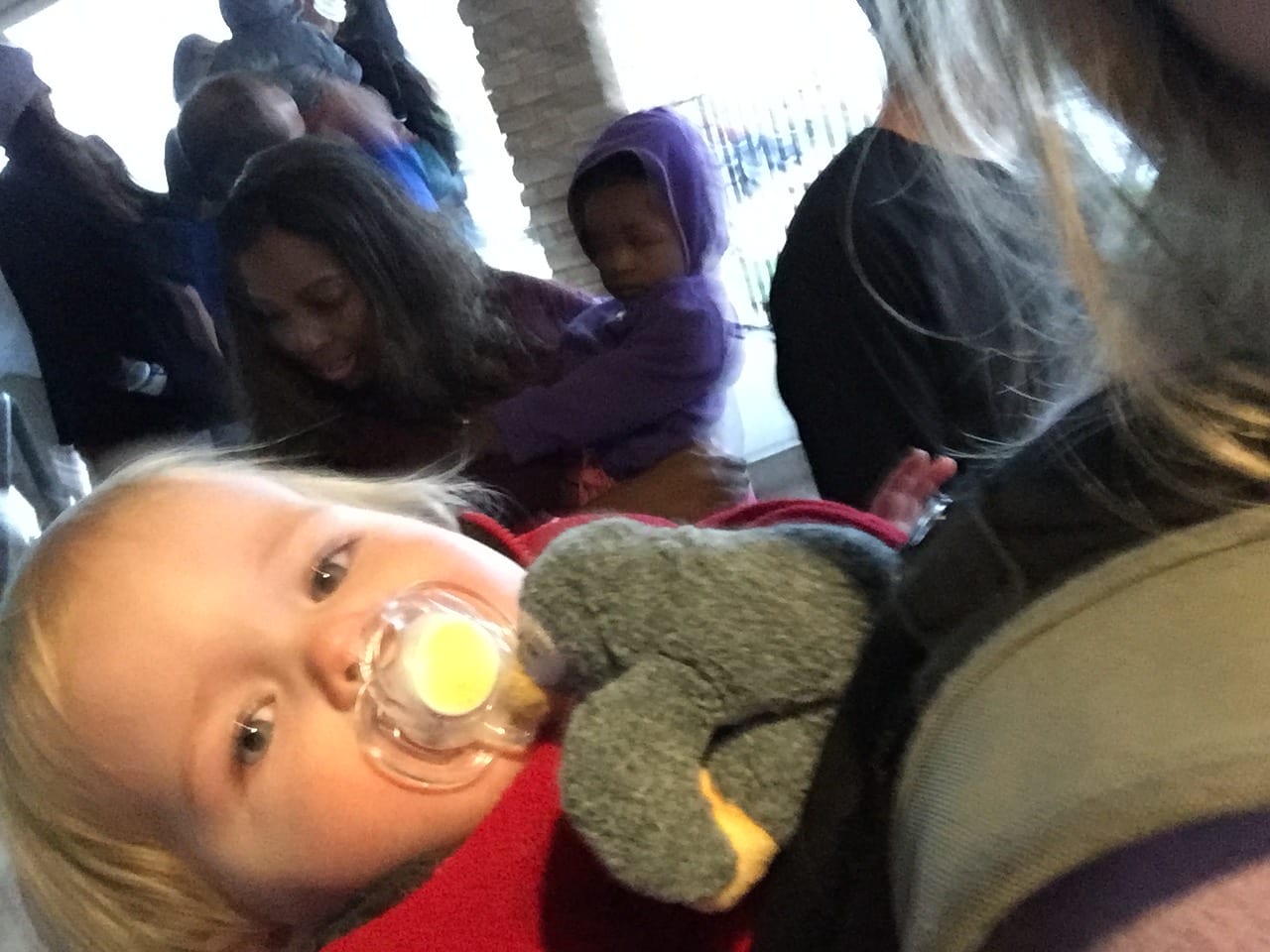


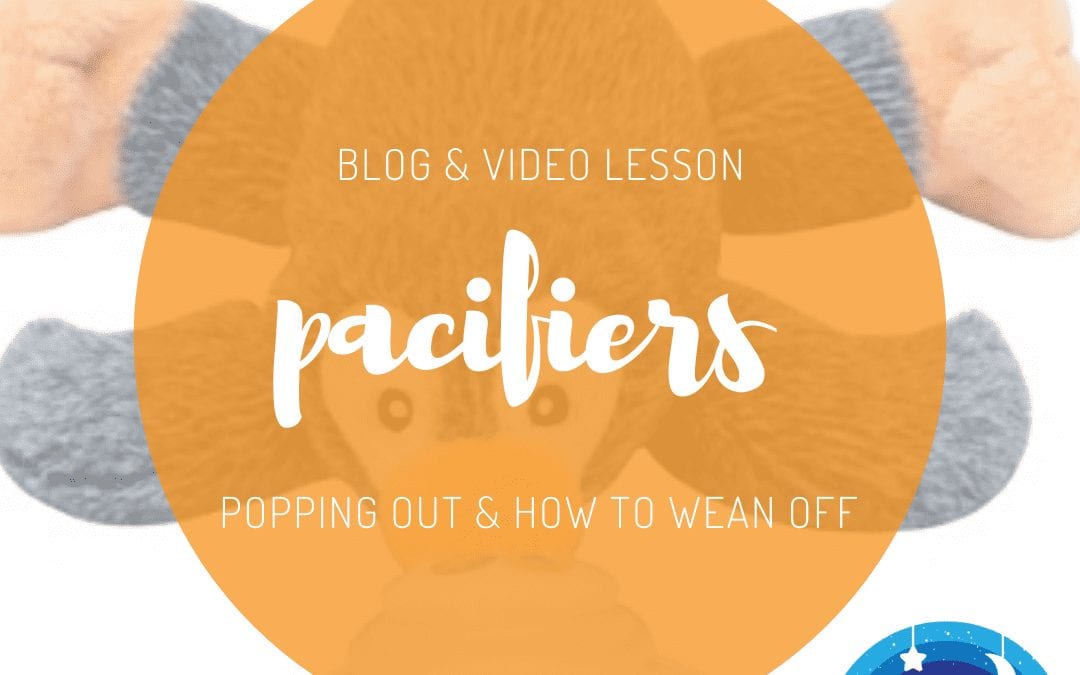
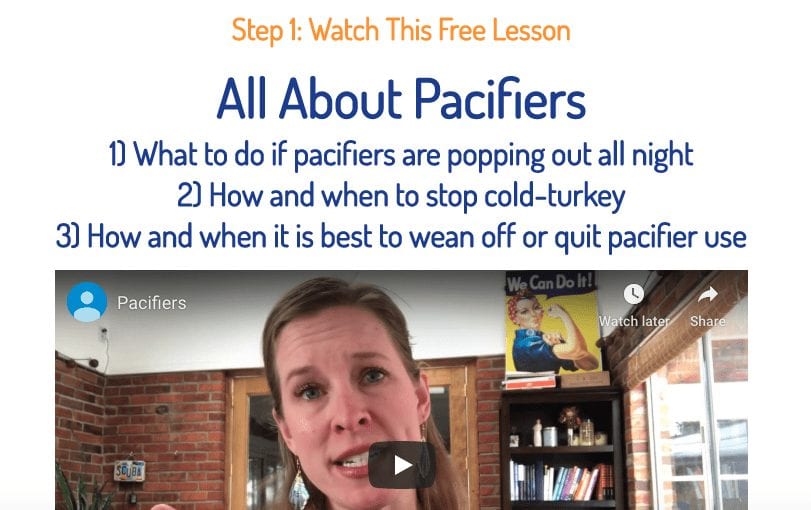
Isn’t a stuffed animal (pacifier holder) a suffocation hazard? I was under the impression there should be nothing in the crib at all.
Although not a sleep aid and only to be used with parents supervision (like everything else for kids!) There is a pacifier holder bib (Giggly Tots) that helps baby train their muscle technique to stop pacifier from falling out. During the day it also catches it in a pocket. I think it’s available on Amazon. Worked wonders for us.
I bought one Giggly Tots Pacifier Bib a few weeks ago for our 6 weeks son from Amazon. I was sceptic at first as tried everything before and nothing worked but this one does the job surprisingly. It has been great actually and helping a lot.